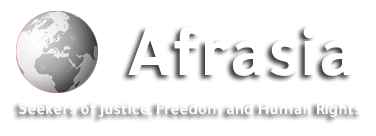
The convoy includes about 15 large buses and more than 150 cars loaded with aid.
Afrasianet - Rasha Al , Drissi - In an unusual scene for more than 17 years, the "Resilience Maghreb" convoy has turned into one of the largest popular solidarity initiatives heading towards the Gaza Strip, with the wide participation of activists from Tunisia, Algeria, Morocco and Libya, with the aim of breaking the Israeli blockade imposed on the Strip since October 7, 2023.
Despite its start with wide popular momentum, the convoy encountered unexpected surprises at the borders of the Libyan political division, as it found itself trapped inside Libyan territory, in a new challenge to Arab popular solidarity.
The convoy set off in an atmosphere of enthusiasm, with about 15 large buses and more than 150 cars loaded with humanitarian and medical aid, carrying about 1,500 participants from the Arab Maghreb countries. It was widely welcomed by residents of western Libya, especially in Tripoli and Misrata.
The authorities in western Libya provided the convoy with the necessary logistical facilities, including fuel, supplies and food, as well as full security for the convoy's route.
However, this popular momentum hit a pivotal obstacle on Thursday evening, June 12, when the security forces of the "General Command" in eastern Libya stopped the convoy at the thirty gate, west of Sirte, claiming that no security instructions were issued from Benghazi allowing it to cross, despite a previous official statement issued by the Ministry of Foreign Affairs in the "stability" government in eastern Libya welcoming the initiative and its goals.
Internal blockade
According to a member of the Coordination of Joint Action for Palestine, the welcoming official statements were not translated on the ground, as the convoy was placed under a virtual siege, as food and medical supplies were denied to it after the first day of the arrest, and the participants were prevented from moving or supplying supplies, at a time when some of them were forced to retreat towards the fifty gate without allowing them to return.
Despite a request by the authorities in eastern Libya to meet with representatives of the convoy, communications were abruptly interrupted, raising uncertainty about the future of the initiative and the fate of the participants.
A member of the Misrata Coordination (Misrata), who preferred not to be identified, said that the convoy faced not only obstruction, but also subjected to escalating security violations, including the arrest of four participants for publishing videos documenting the harsh conditions of detention.
Security authorities have set up a new checkpoint to prevent any logistical or food support from arriving, while mobile internet devices have been confiscated and advanced jamming devices have been used to isolate participants from the outside world, he said.
The member noted that the participants were deprived of sleep due to continuous floodlights throughout the night, and spoke of verbal harassment and harassment of the participating women, which alarmed civil organizations that were following or supporting the convoy.
On the other hand, the Misrata Coordination set up a support point near the last security gate of the unity government, to provide assistance to those forcibly withdrawn, including those suffering from seizures due to the harsh conditions.
Unknown fate
In a live broadcast on the evening of Saturday, June 14, a representative of the convoy from the detention site announced their refusal to negotiate with the authorities before releasing the four detainees, revealing that there was a second convoy stationed near the fifty gate waiting to join the main convoy if the demands were met.
But so far, contact with the convoy is still cut off, amid timid attempts by some Libyan parties to intervene and lift the security blockade, without tangible results.
This initiative comes in the context of the escalating wave of Arab popular solidarity with Gaza, which has been under a suffocating Israeli blockade for more than 17 years, and worsened after Operation Al-Aqsa Flood last October, to which Israel responded by launching a war of extermination against civilians, closing land and sea crossings, and preventing the entry of food, medicine and fuel .
This led to an almost complete paralysis in the Gaza Strip, where infrastructure and basic services collapsed, electricity and water were cut off, and the health system collapsed, under humanitarian conditions described by UN organizations as catastrophic.
Observers believe that Gaza pins hopes on initiatives such as the Steadfastness Convoy, but these initiatives find themselves stuck behind Arab walls, and face obstacles no less severe than those imposed by the occupation authorities, which raises questions about the usefulness of Arab popular support if it remains captive to divisions and political red lines.

